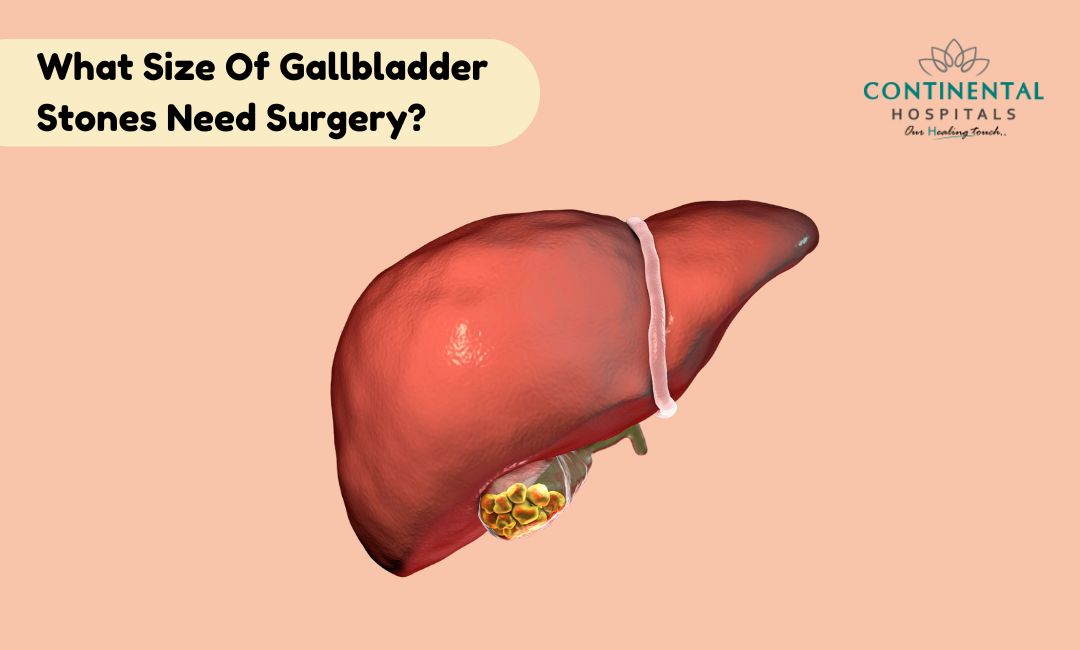Gallbladder stones, or gallstones, are a common condition that can cause significant discomfort and health issues. They form in the gallbladder, a small organ located beneath the liver, and can vary in size from tiny grains to large masses. Understanding when these stones require surgery is crucial for effective treatment and managing symptoms.
What Are Gallstones?
Gallstones are hard deposits that can form in the gallbladder, usually due to an imbalance in the substances that make up bile. Bile is a digestive fluid produced by the liver and stored in the gallbladder.
There are two main types of gallstones:
Cholesterol Gallstones: These are the most common type, often appearing as yellow-green stones.
Pigment Gallstones: These are smaller and darker and are made up of bilirubin, a substance produced by the breakdown of red blood cells.
How Big Are Gallstones?
Gallstones can vary in size:
Small Stones: These are less than 5 millimeters in diameter.
Medium Stones: These range from 5 to 10 millimeters.
Large Stones: These are greater than 10 millimeters and can even grow up to several centimeters in diameter.
When Do Gallstones Require Surgery?
Not all gallstones need surgery. The decision to proceed with surgery often depends on various factors, including the size of the stones, the presence of symptoms, and potential complications. Here’s a breakdown of when surgery might be necessary:
Size of Gallstones: While there is no strict size threshold for surgery, larger stones are more likely to cause symptoms or complications. Stones larger than 10 millimeters often pose a higher risk of obstructing the bile ducts, leading to more severe problems.
Symptoms: If gallstones cause symptoms, such as abdominal pain, nausea, vomiting, or digestive issues, surgery may be recommended. Symptoms often indicate that the stones are causing inflammation or blocking bile flow, which can lead to more serious conditions like cholecystitis (inflammation of the gallbladder) or pancreatitis (inflammation of the pancreas).
Complications: Gallstones that cause complications, such as acute cholecystitis, bile duct obstruction, or pancreatitis, generally require surgical intervention. These conditions can lead to severe pain and more complex health issues if not addressed promptly.
Non-Symptomatic Stones: Gallstones that do not cause any symptoms (asymptomatic stones) generally do not require surgery. In such cases, doctors usually recommend regular monitoring rather than immediate surgical intervention.
Types of Gallbladder Surgery
If surgery is deemed necessary, there are two primary types of procedures to remove gallstones or the gallbladder itself:
Laparoscopic Cholecystectomy: This is the most common and minimally invasive method for gallbladder removal. During this procedure, small incisions are made in the abdomen, and the gallbladder is removed using specialized instruments. Recovery time is usually quicker with this method, and patients experience less post-operative pain.
Open Cholecystectomy: This procedure is more invasive and involves a larger incision in the abdomen to remove the gallbladder. It is generally reserved for cases where laparoscopic surgery is not possible or if there are complications.
Recovery and Aftercare
Recovery from gallbladder surgery varies depending on the type of procedure and individual health. Generally, patients can expect:
- Laparoscopic Cholecystectomy: Shorter hospital stays, quicker recovery times, and the ability to return to normal activities within a few weeks.
- Open Cholecystectomy: Longer hospital stays, a more extended recovery period, and more significant post-operative pain.
After surgery, patients may need to adjust their diet and follow specific guidelines to ensure proper digestion and avoid complications. This often includes eating a low-fat diet and gradually reintroducing foods.
Treatment Options at Continental Hospitals
At Continental Hospitals, a leading facility in Hyderabad, you can expect comprehensive care for gallstones, including state-of-the-art diagnostic and treatment options. Here are some of the treatment options available:
Medication: For small, asymptomatic gallstones, medications such as ursodeoxycholic acid may be prescribed to dissolve the stones gradually. This treatment can take months or years and is not suitable for large stones or stones causing significant symptoms.
Lifestyle Changes: Dietary modifications, such as reducing fat intake and maintaining a healthy weight, can help manage symptoms and potentially prevent the formation of new gallstones.
Surgery: If surgery is required, Continental Hospitals offers laparoscopic cholecystectomy, a minimally invasive procedure to remove the gallbladder. This technique involves making small incisions in the abdomen and using a camera and special instruments to remove the gallbladder. It generally results in less pain, a shorter recovery time, and minimal scarring compared to traditional open surgery.
Post-Surgical Care: Continental Hospitals provides excellent post-operative care to ensure a smooth recovery. This includes pain management, dietary advice, and follow-up appointments to monitor your recovery progress.
Conclusion
Gallstones can be a significant health concern, especially when they are large or cause symptoms. While not all gallstones require surgery, those that are symptomatic or pose risks of complications often do. Laparoscopic cholecystectomy is a preferred method due to its minimally invasive nature and quicker recovery time.
If you have gallstones and are experiencing symptoms, Consult with our best gastroenterologist at Continental Hospitals for expert care.
Related Blogs:
.webp)














